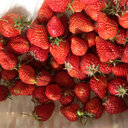[Effects of pravastatin in prevention of diabetes and mechanism thereof: experiment with non-obese diabetic mice].
Keywords
Abstract
OBJECTIVE
To explore the effects of pravastatin in prevention of diabetes and mechanisms thereof.
METHODS
1183 to 4-week-old female non-obese diabetic (NOD) mice were randomly divided into 4 groups: control group (n = 30), fed with regular diet, low-dose pravastatin group (n = 29), fed with 1 mg kg(-1) d(-1) pravastatin via the diet, medium-dose pravastatin group (n =29) fed with 10 mg kg(-1) d(-1) pravastatin via the diet, and high-dose pravastatin group (n = 30), fed with 40 mg kg(-1) d(-1) pravastatin via the diet. The mice were followed up till they were 30-week old. Urine glucose was measured every week. Eight 12-week old mice without onset of DM from each group were killed with the pancreas taken out to undergo insulitis scoring via microscopy. Another 8 12-week old mice without onset of DM from each group were killed with their spleens taken out. Suspension of splenocytes was made, put into a 96-well plate, and stimulated by rGAD65; and [3SH]-thymidine was incorporated. The stimulation index (SI) of the splenocytes was calculated. Flow cytometry was used to observe the population of CD4 CD25+ regulatory T cells. ELISA was used to detect the interferon (IFN)-gamma and interleukin (IL)-4 levels in the supernatants of splenocytes. RT-PCR was used to detect the mRNA expression of IFN-gamma and IL4 in the spleen.
RESULTS
At 30 weeks of age, the incidence rate of DM onset of the high-dose pravastatin group was significantly lower than that of the control group (P = 0.003), and the incidence rates of DM onset of the medium and low dose groups were not significantly different from that of the control group (both P >0.05). The severity of insulitis at 12 weeks of age of the high-dose pravastatin group was significantly lower than that of the controls group (P <0.001). There were no significant difference in the SI level and in the percentage of CD4+ CD25+ regulatory T cells among the four groups (all P >0.05). The IFN-gamma level in the supernatant of splenocytes of the high-dose pravastatin group was (42 + 20) pg/ml, significantly lower than that of the control group [(157 + 32) pg/ml, P = 0.000]. The IFN-gamma mRNA expression level in the spleen of the high-dose pravastatin group was 0.24 +/- 0.10, significantly lower than that of the control group (0.81 +/- 0.18, P =0.000). The IL-4 level in the supernatants of splenocytes of the high-dose pravastatin group was S (91 +/- 22) pg/m, significantly higher than that of the control group [(44 +/- 20) pg/ml, P=0.000)]. The IL4 mRNA expression level in spleen of the high-dose pravastatin group was 0.39 +/- 0.18, significantly higher than that of the control group (0.20 +/- 0.08, P = 0.002). However, there were not significant differences in the IFN-gamma and IL-4 levels in the supernatant and the IFN-gamma and IL-4 mRNA expression in spleen among the medium dose, low dose, and control groups (all P >0.05).
CONCLUSIONS
High-dose pravastatin therapy at early time decreases the IFN-gamma level and increases the IL-4 level, shifts the immune response to the direction of Th2, and subsequently lessens insulitis and prevents DM.



